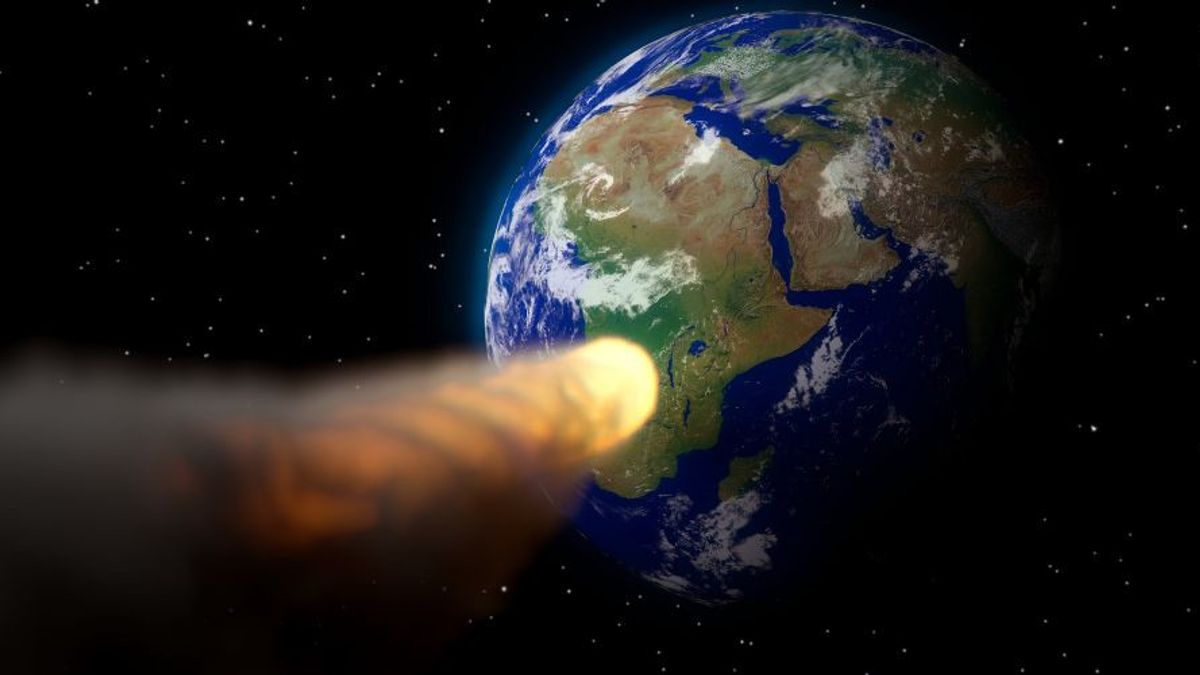JAKARTA – A new space study has revealed that using the nuclear interference method is an effective solution in an emergency scenario where the asteroid is in the final stages of a collision course with Earth.
When it comes to avoiding a potentially catastrophic asteroid impact, there are several theories currently being tested based on how much preparedness is needed and, of course, the size of the incoming celestial body. The kinetic deflection model, for example, proposes a small explosion on the asteroid's surface to deflect it and avoid impact.
Another version of this strategy is to send a spaceship into space and crash it into an asteroid to bring it down. NASA is actually testing this approach as part of the DART planetary defense project.
The asteroid gravity tractor model proposes the use of a large spacecraft that hovers over the asteroid and interacts gravitationally with it so that the asteroid is propelled into a non-threatening orbit.
There are also tactics that involve using focused sunlight to vaporize some of the material from the asteroid's surface, a process that will create thrust and deflect the asteroid from its collision course. However, most of the solutions mentioned above take a lot of time and preparation, which is where distraction tactics sound more effective.
But so far, the risk associated with the disturbance is that breaking the asteroid into smaller pieces might pull some of the fragments toward Earth and cause a smaller impact. Now, a new study using advanced impact simulation techniques has revealed that nuclear interference techniques could indeed save Earth from an asteroid impact that appeared on radar a little too late for preparation.
The scientists used software called Spheral which models the asteroid's nuclear annihilation and then studies the gravitational trajectories of the fragments to see if they can safely fly past Earth. Hydro simulations tested on at least five asteroids proved that nuclear disruption was a viable final method of preventing an asteroid impact.
As part of the research, scientists virtually deployed a 1-Megaton nuclear device that exploded a few meters from the 100-meter-sized asteroid Bennu. To remember, Bennu is the same asteroid that has a 0.037 percent probability of making an impact with Earth in 2182.
The team behind the new study, which has been published in Acta Astronautica, says that if the calculated nuclear disturbance had occurred two months earlier, then the asteroid that was about to hit Earth, 99.99 percent of the mass of the asteroid would miss Earth.
The proposed disturbance event is said to decrease the mass fraction of the collision by a factor of 1,000 or more. Even if the asteroid were larger, a nuclear disturbance carried out six months before the date of impact would be effective enough that 99 percent of its fragments flew past Earth without posing any risk.
However, it is a daunting task to follow the trajectory of each broken fragment by studying its gravitational interactions with other fragments in the debris cloud, Earth, and Sun. Plus, there is still a small chance that some of the shards that shattered after a nuclear disturbance could enter Earth's atmosphere.
Overall, the team concludes that nuclear disruption is still the most effective method of preventing an asteroid emergency impact at the end of time. However, the kinetic method should be used if there is sufficient time to prepare. But asteroids come in all shapes and sizes, so more sophisticated simulations are needed to better assess the feasibility of a nuclear disruption event as a last resort.
The English, Chinese, Japanese, Arabic, and French versions are automatically generated by the AI. So there may still be inaccuracies in translating, please always see Indonesian as our main language. (system supported by DigitalSiber.id)













